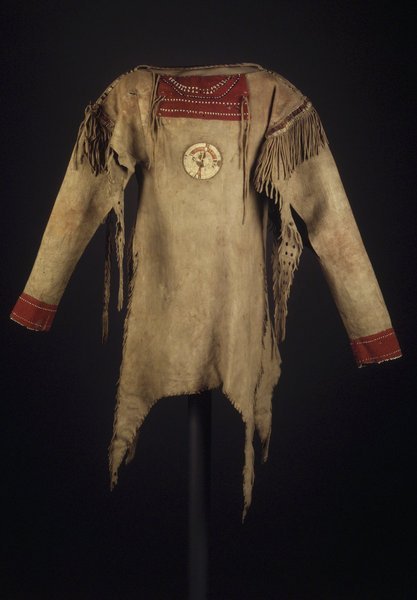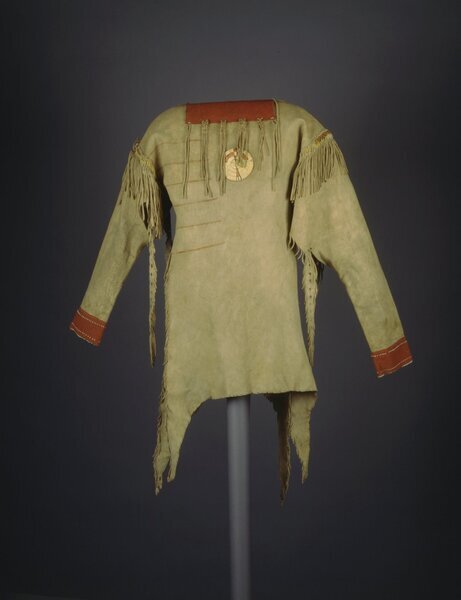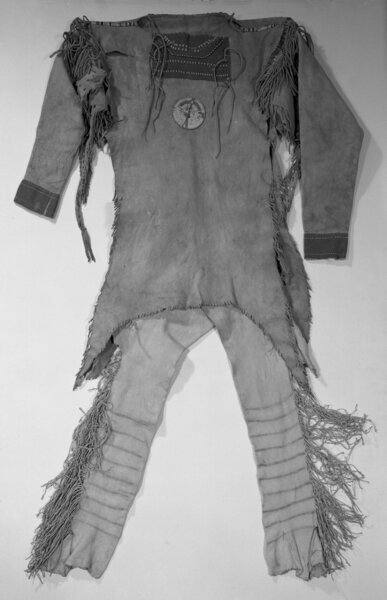Shirt Item Number: 50.67.8 from the Brooklyn Museum




Description
This white buckskin shirt, with the faint remnants of a pinkish stain in the general shoulder area, has a squared cloth bib and cuffs made of red Stroud cloth. This bib has been attached with knotted lengths of buckskin thong. Both bib and cuffs are decorated with white seed beads and additional pony beads are sewn onto the bib. A line of chain stitch embroidery in blue decorates the bib at the front while the back of the bib is plain. A rosette on the front center of the shirt is decorated with reddish-orange and white porcupine quills and brown maidenhair fern stems that are in a configuration that probably represent a thunderbird. Bird quills in white, green, and brown are wrapped around the rawhide strips that are suspended from each shoulder. Additional fringe is inserted in each sleeve seam, which is wrapped at the base with red bird quills and white porcupine quills. Four long, pierced strips, two suspended under each sleeve, are also fringed. Horizontal reddish stripes are painted on the back of the shirt. A rectangular shaped repair, which appears to be of native origin, located on the front of the proper right shoulder, has been reattached to the long pierced tab by a knotted string of hide that matches the existing fringe. See Jarvis research file in Arts of Americas office.
Label
This shirt demonstrates important artistic innovations on the Plains during the first half of the nineteenth century, when newly established military forts became centers for trade. The square bib is made from European trade materials: wool Stroud cloth from Stroud, England, small seed beads, and larger pony beads from Vienna. The more customary rosette in the center of the chest is formed by porcupine quills and maidenhair-fern stems and probably represents a thunderbird, a powerful spiritual symbol. The shirt is one of many objects collected by Dr. Nathan Sturges Jarvis while he served as a medical doctor in Fort Snelling, Minnesota, between 1830 and 1833.
Credit Line
Henry L. Batterman Fund and the Frank Sherman Benson Fund
Item History
- Made between 1800 and 1825
What
- Name
- Shirt
- Identification Number
- 50.67.8
- Type of Item
- shirt
- Material
- buckskin, stroud cloth, pony bead, seed bead, yarn, porcupine quill, maidenhair fern stem, bird quill and pigment
- Overall
- length 42.0 in
Where
- Holding Institution
- Brooklyn Museum
When
- Creation Date
- between 1800 and 1825
Other
- Classification
- Clothing